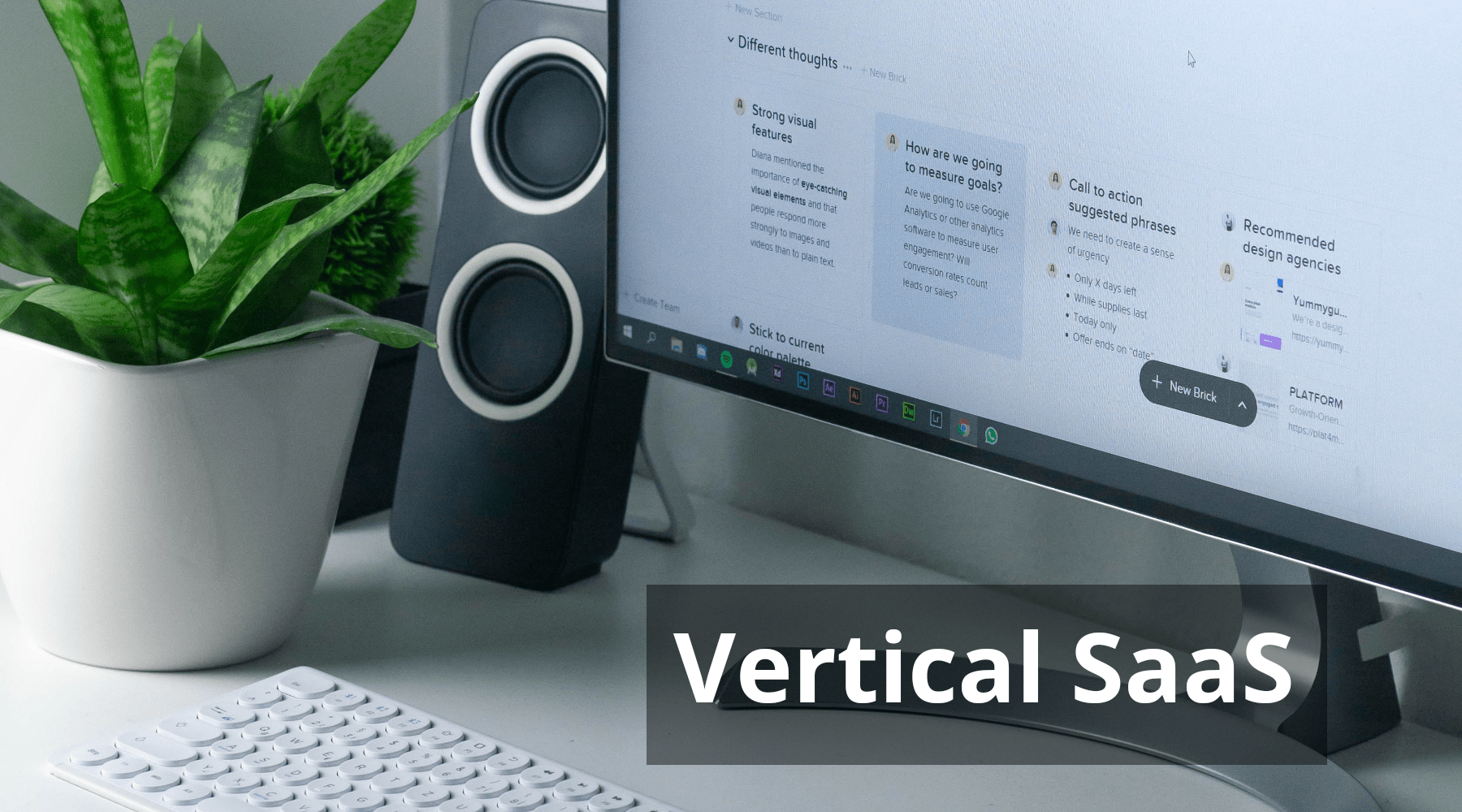The tech industry is very prone to change. This includes the thriving SaaS sector. The latest development in the industry has been Vertical SaaS.
Most of the public SaaS companies have subscription-based revenue models. It includes the 2019 Forbes Cloud 100.
Virtually everyone has some experience with using the tools that SaaS produces. SaaS remains a rapidly growing sector. It is expected to grow by 12% over the next five years.
Presently, there is more to SaaS than when it began. Business models have changed to reflect new priorities. This includes the formation of both vertical and horizontal SaaS.
Many longstanding tech firms are now offering vertical SaaS solutions.
E.g., SAP AG is offering its third iteration of Business ByDesign. It is billed as an “end-to-end” SaaS business process solution.
IBM’s Genelco SaaS is aimed at the insurance industry. It can be used to handle life- and health-policy processing as well as annuity-product portfolios.
A large number of companies in this space are start-ups focused solely on vertical SaaS offerings.
One of them is Philadelphia-based Internet Pipeline Inc. It focuses on customer relationship management (CRM) for the insurance industry. They take care of sales and business processes.
It also includes Kenandy Inc. It focuses on manufacturing enterprise resource planning (ERP).
In 2011, consultancy Forrester Research Inc. predicted significant growth in this area of the SaaS market. He called it one of the five trends that will change cloud sourcing.
Vertical SaaS may also be referred to as the vertical cloud.
So the question is: What exactly is vertical SaaS? Is it the future? How to implement it in your business? That is what we will talk about today.
What is Vertical SaaS?
Vertical SaaS creates software that is targeted to a very particular industry. This is a more recent trend in SaaS. So it is not as mature as the horizontal market. Several commentators feel that there may be more opportunities for new vertical SaaS. This is due to them being a more recent phenomenon.
The vertical SaaS model does not cover a broad product category. It does not target to be all things to all people. Instead, they focus much more on industry verticals.
Their solutions are purpose-built for precise industry niches. So, the size of their potential market is narrowed.
They are often developed by people with expertise in that particular industry.
E.g., Health Assurance Plan was developed by a dental practice. It worked so well in their practices that it became something that others could put in place too.
The plan solves a very industry-specific problem. It offers dental plans to those without insurance.
Vertical SaaS can take a much more narrow approach to the market than horizontal. It would tend to require fewer resources.
Let us now take a look at the growth of vertical SaaS to understand its importance for businesses.
The Growth of Vertical SaaS
Constant use ensures the regular evolution of vertical saas products.
Software as a Service began back in the 1960s. But it was known as “utility computing” or “time-sharing.” It consisted of the “centralized hosting of business applications.”
Mainframe providers such as IBM offered services like database storage and computing power.
In the 1990s, the Internet evolved this service into a new class of centralized computing. It was called application service providers. An ASP offers access to services over the Internet, known as ‘apps-on-tap.’
SaaS, as we know it today, is the evolution of the ASP model. It is a business model in which customers pay to use software hosted by a company on a remote computer.
Netflix is a prime example. This business model has been growing steadily in popularity. This is simply because it provides greater flexibility.
And now, we have entered a new stage of SaaS evolution – vertical SaaS.
The numbers show that the vertical SaaS market is gaining popularity. It will likely be a formidable competitor to horizontal SaaS companies.
It means you will probably see a massive momentum in your product’s demand. This is irrespective of which industry you want to target with your vertical SaaS.
Vertical SaaS Examples
It is a cloud-based content management solutions provider to the life science industry. It went from zero to $2.4 billion in less than six years. They raised just $10 million in initial funding.
It offers a set of solutions for the automotive industry. It acquired Dealertrack for $4 billion. Dealertrack is an on-demand software provider for the automotive industry,
It is a Shanghai-based financial asset exchange SaaS product. The firm focuses on P2P lending solutions for banks and insurance companies.
It rose in valuation to $39.4 billion within a short span of eight years.
ClearCare
ClearCare is a health solution provider in the United States. They delve into electronic health care records. E.g., e-charts, e-prescriptions, e-charts, and the goodness of fully automatic labs. It works best on both desktops as well as mobile.
The app gives you a patient portal to see your account and all of the patient’s information in it. Due to this newer offspring of SaaS, it has made management so efficient, clean, and structured.
Madwire®
Madwire® is a business solution and marketing company. It helps smaller firms evolve to grow into bigger ones.
Madwire® does this by letting budding entrepreneurs and SMBs manage and grow their companies. They used a single dashboard for this, namely the Marketing 360®.
It also strives to create a difference every day. It does this by furnishing help and service to the needy.
Vertical vs. Horizontal SaaS
-
Sales and Marketing
Horizontal SaaS delves into the chapter of ‘sales and marketing.’ It hopes to engross more verticals. Then, these verticals have to convert more leads into loyal clients.
On the other hand, vertical SaaS trends only have to focus on a specific niche.
-
Cost of Acquisition
A vertical SaaS has a lower cost of acquisition relatively. This is due to its lesser reach.
Nonetheless, horizontal SaaS categories rely on the whole business. They promote a bigger target audience. So, the cost is more. The overall lead generation spend is higher as well.
-
Manageability and Scale
Vertical SaaS enjoys the advantage of higher manageability. This is due to the reduced level of facets and operations. A small in-house outsourced team cuts down on the unnecessary issues.
This is not the scenario in a horizontal SaaS model. A horizontal software provider deals with a vast business at large. So, scalability and manageability induced are way more extensive.
-
Going Digital
The toughest competition for a vertical SaaS provider today is to go digital. They will have to start their leads towards a complete digital transformation.
Meanwhile, the stricter challenge for Horizontal SaaS was to target the non-digitalized hubs. They, too, segmented nondigital, traditional niches for their businesses as well.
-
The customer success picture
The horizontal SaaS services have been in the market for a much longer time. This provides maturity and leverage to know more about the customers.
They have already created awareness amongst the people. And they are eventually turning a customer into a customer success advocate.
Advantages of Vertical SaaS
- It covers niche markets. They offer higher chances of lead conversion
- Companies get a lower customer acquisition cost and limited marketing spend
- It is compliant with industry-specific standards and requirements
- Companies often have higher customer retention. This is due to the level of niche expertise they offer
- They can get up to 8 times cheaper acquisition costs. This is due to their highly targeted customer base.
- They are now achieving higher valuations than horizontal SaaS. The median vertically-focused public SaaS comp is trading at 6.8x revenue. This is as compared to 3.8x for horizontal SaaS. This is based on representative companies’ index.
- Companies can adapt to their user-base demands more quickly. They can develop tailored features for a specific industry. Ultimately, this flexibility translates into the decreased churn. It leads to further upsell opportunities with its current customer base.
Challenges of Vertical SaaS
- Acquiring leads is challenging. This is as the marketing strategy is centered around a small group of niche audiences
- Convincing prospects to migrate from horizontal SaaS to vertical SaaS is not easy
- Companies have to be taught why it is time for them to change from their traditional solutions. They are somewhere around the point that horizontal SaaS was 6-8 years ago.
- To scale, firms will need to enter into parallel verticals. It must be done once they own their first. This is not always an easy undertaking.
- Vertical SaaS vendors enjoy lower capital and customer acquisition costs. They can become the undisputed category leader faster than a horizontal vendor. This can create significant entry barriers in their particular markets.
Netflix’s journey as a vertical SaaS
- Netflix began providing streaming services with content enjoyed by smaller audience groups.
- It quickly grew into a massive player in the home media market.
- Then, it even encroached on full-scale movie making as it grew.
- It then began to craft content for very narrow viewerships.
- This was as opposed to big Hollywood studios trying to produce mass-market films.
How to Implement a Vertical Strategy
-
Pick the Right Vertical
As mentioned above, vertical SaaS solutions do not follow the “one-size-fits-all” approach. Instead, it addresses industry-specific challenges remarkably well.
Thus, it is imperative to pick the right vertical. By “right,” I mean an industry with growth potential and is not nearing saturation.
Conducting market research is equally important. Decide on your vertical. Then identify the top ten SaaS companies. Check their offerings in terms of both pricing and features.
Find out how you can do innovation. It is also important to measure the innovation’s performance using innovation metrics. There may be not enough things that you can do to make your product unique. Then you will likely struggle to gain a significant market share. In that case, you should try another vertical.
-
Stick to One Vertical
You might want to jump to another vertical. This is because they also have similar problems. It may even be that you wish to increase your customer base. But you should avoid doing that.
Each extra vertical requires you to customize your product to a certain extent. This will limit your capability to offer solutions to a specific vertical.
E.g., Innovaccer is a healthcare data activation company. It changes the way care is delivered. It started focusing on diverse sectors like finance, retail, entertainment, and healthcare.
But in 2016, Innovaccer’s founders decided to narrow their focus to just healthcare. They let go of their non-healthcare customers. This led them to lose almost 60% of their revenue.
But soon enough, the company started gaining momentum. To date, the firm has raised more than $120 million.
-
Your Product Should Offers Industry-Centric Compliance Tools
Aiming for a single market helps to offer industry-specific compliance tools and standards. For example:
- You may serve healthcare customers. Then you could provide built-in HIPAA (Healthcare Information Portability and Accountability) compliance options.
- You may operate in the finance industry. Then you can offer financial services compliance options.
You should try to offer as many industry-specific compliance tools as you can. This will also enable you to stand out from the crowd and penetrate the market much faster.
-
Engage Industry Insiders to Find Out Challenges of Customers
Vertical SaaS companies need to speak the language of prospects. It provides solutions that entirely address the industry’s pain points. Doing so helps you to acquire and retain customers.
Insiders can give deep insights into the industry’s nuance. This can help you improve your product. Engaging with industry insiders is empowering. You can understand and adapt to the market changes quickly.
Insiders could be parties who have been in your industry for a long time. They include:
- Your customers
- Researchers
- Professors
- Promote Your Product Aggressively
Your product may be much better at solving your customers’ problems. But they cannot buy it if they don’t know about it.
There is another reason to promote your product aggressively. Your competitors have been in the market for years. You need to build trust with tailored marketing. This will make people choose your product over theirs.
Conclusion
Entrepreneurs have to ponder whether becoming a vertical software company is worth it. But indeed, with time, we will see a slew of new software companies.
The Swiss army knife approach is giving way to innovative and refined tools. The choice to go vertical has already proven to be lucrative.
The market is still hot for well-executed SaaS. The 2017 State of SaaS report says that SaaS startups are still getting funded. They are growing in popularity.
With this popularity, however, comes a caution. Expectations of performance and availability have risen too. Evaluate and create something world-class, or find your SaaS on the reject pile.









